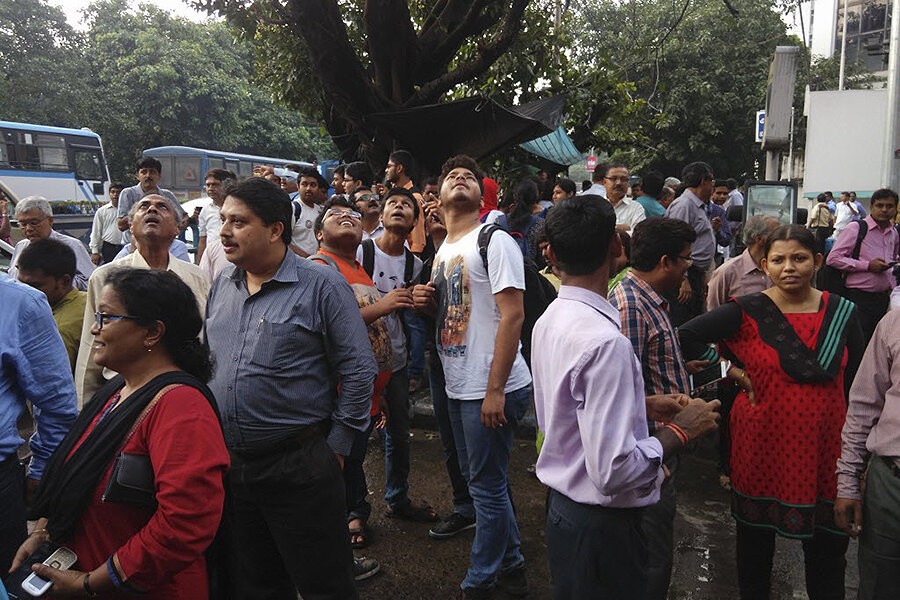6.8 earthquake in Myanmar felt from Thailand to Bangladesh
Loading...
| YANGON, MYANMAR
A powerful earthquake of 6.8 magnitude struck central Myanmar on Wednesday, the U.S. Geological Survey (USGS) and local authorities said, shaking buildings across the Southeast Asian nation and the region.
The quake hit the town of Chauk, southwest of Mandalay, the Myanmar government said, with tremors felt as far away as Bangkok, where witnesses reported high rise buildings swaying, and the Bangladeshi capital Dhaka.
There were no immediate reports of casualties and initial reports suggested limited damage.
"My house shook during the quake. Many people were scared and they ran out of the buildings," said Maung Maung Kyaw, a local official of the ruling National League for Democracy (NLD).
"I went outside to check the situation in the town. Some of the buildings are split and nearly collapsed, but I don't see any people affected by the quake," said Maung Maung Kyaw.
The USGS said the epicenter was about 145 km (90 miles) west of the city of Meiktila, and relatively deep at 84 km (52 miles).
Chauk is about 35 km from Myanmar's ancient capital of Bagan, known as the "City of 4 Million Pagodas" and a major draw for Myanmar's nascent tourism industry.
According to the 2014 census, the town has a population of about 45,000, with around 185,000 living in the surrounding area. It was a thriving oilfield during the British colonial era.
"So far as we heard from our local staff, a three-story building collapsed in Chauk and a pagoda was badly damaged in a town called Yenanchaung," a fire department official in the regional capital Magwe told Reuters.
"We haven't heard any information about casualties."
Ko Tin Ko Lwin, a resident of Yenanchaung township, told Reuters that a pagoda that had been cracked before the quake had collapsed, while electricity poles and some trees were felled.
The quake shook buildings in Myanmar's biggest city of Yangon and in other towns and cities, witnesses said.
Office buildings in the Thai capital Bangkok, to the east of Myanmar, shook for a few seconds, residents there said.
The quake was also felt in Bangladesh, to the west of Myanmar, where some people ran out into the street as buildings shook, residents said.
Myanmar is in a seismically active part of the world where the Indo-Australian Plate runs up against the Eurasian Plate.
In March, 2011, at least 74 people were killed in an earthquake in Myanmar near its borders with Thailand and Laos.
Reporting by Yangon and Bangkok bureaus; Writing by Robert Birsel and Antoni Slodkowski; Editing by Alex Richardson







